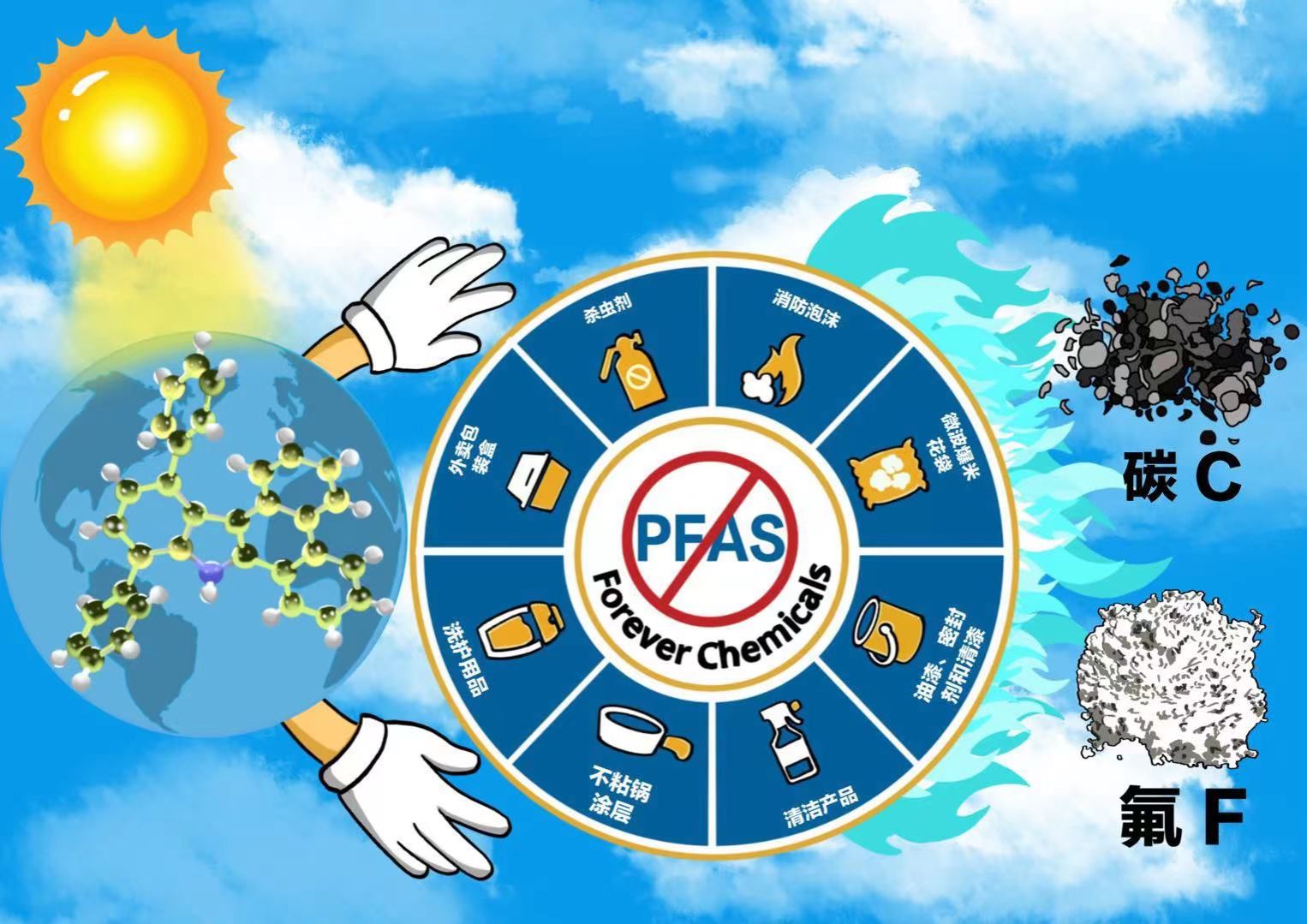A research team led by Prof. KANG Yanbiao from the University of Science and Technology of China (USTC) of the Chinese Academy of Sciences has made a significant discovery in the field of environmental chemistry. They developed a novel photocatalyst named KQGZ, which can photocatalytically defluorinate polyfluoroalkyl and perfluoroalkyl substances (PFASs) at a low temperature range of 40 - 60°C. This finding has been published in Nature.
PFASs, referred to as ‘forever chemicals’, possess high thermal and chemical stabilities as well as hydrophobic and oleophobic properties because of the inert carbon-fluorine (C–F) bonds. As a result, they are widely used in various fields such as chemicals, electronics and medical devices. However, the inertness of the C–F bonds also make it difficult for PFAS to decompose through defluorination under natural environment or mild conditions. For example, pyrolysis of Teflon usually proceeds over 500°C and toxic gases are released. The disposal of PFAS into the natural environment has led to a series of environmental and health issues.
To address the challenges, the team designed and created an organic super-photoreductant called KQGZ based on the characteristic of photoreductants’ strong reducibility under specific light conditions. As a type of photoreductant, KQGZ can be excited by absorbing light and transfer an electron from its excited state to other organic molecules. By adding KQGZ to the reaction system and experimenting with various reaction conditions, the team achieved complete defluorination and mineralization of Teflon and small molecule PFAS at low temperatures for the first time, efficiently recycling them into inorganic fluoride salts and carbon resources.
More specific, the study's core experiments involved the application of KQGZ as a photocatalyst under visible light to defluorinate a range of PFASs, including polytetrafluoroethylene (PTFE), perfluorocarbons (PFCs), perfluorooctane sulfonic acid (PFOS), polyfluorooctanoic acid (PFOA), and their derivatives. The process resulted in the formation of amorphous carbon and fluoride salts from PTFE, while oligomeric PFASs yielded a variety of carbonate, formate, oxalate, and trifluoroacetate products. This not only addresses the degradation of PFASs but also enables the recycling of fluorine in the form of inorganic fluoride salts.
A detailed mechanistic investigation was also conducted to understand the reaction behavior and product composition differences between PTFE and oligomeric PFASs. The researchers discovered that the photocatalytic reduction ability is not directly correlated with the excited oxidation potential (*Eox) of the photocatalyst, challenging the traditional paradigm in the field. This insight suggests that the electron transfer ability of the photocatalyst may be related to the torsion of the carbazole ring, a finding that could guide the design of more effective photocatalysts in the future.
Finally, the study also meticulously investigated the effects of various reducing reagents, finding that most demonstrated good reactivity, with γ-terpinene and caesium formate yielding the highest results. Control experiments confirmed the indispensable role of light, photocatalyst, and reducing reagent in the defluorination process.
This study not only reports for the first time the promoting effect of highly twisted carbazole-cores on the electron transfer of super-photoreductants, but also shows that the excited oxidative potential of photoreductants is not directly related to their reduction ability, and therefore should not be the only standard for the photoreduction ability. In addition, the ability to completely defluorinate Teflon and other PFAS can serve as a standard for the reduction ability of organic reductants.

An illustration of PFAS. (Image from USTC)
Paper Link: https://www.nature.com/articles/s41586-024-08179-1
(Written by XU Jingqi, Edited by WU Yuyang, USTC News Center)